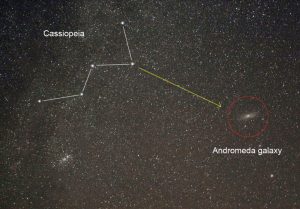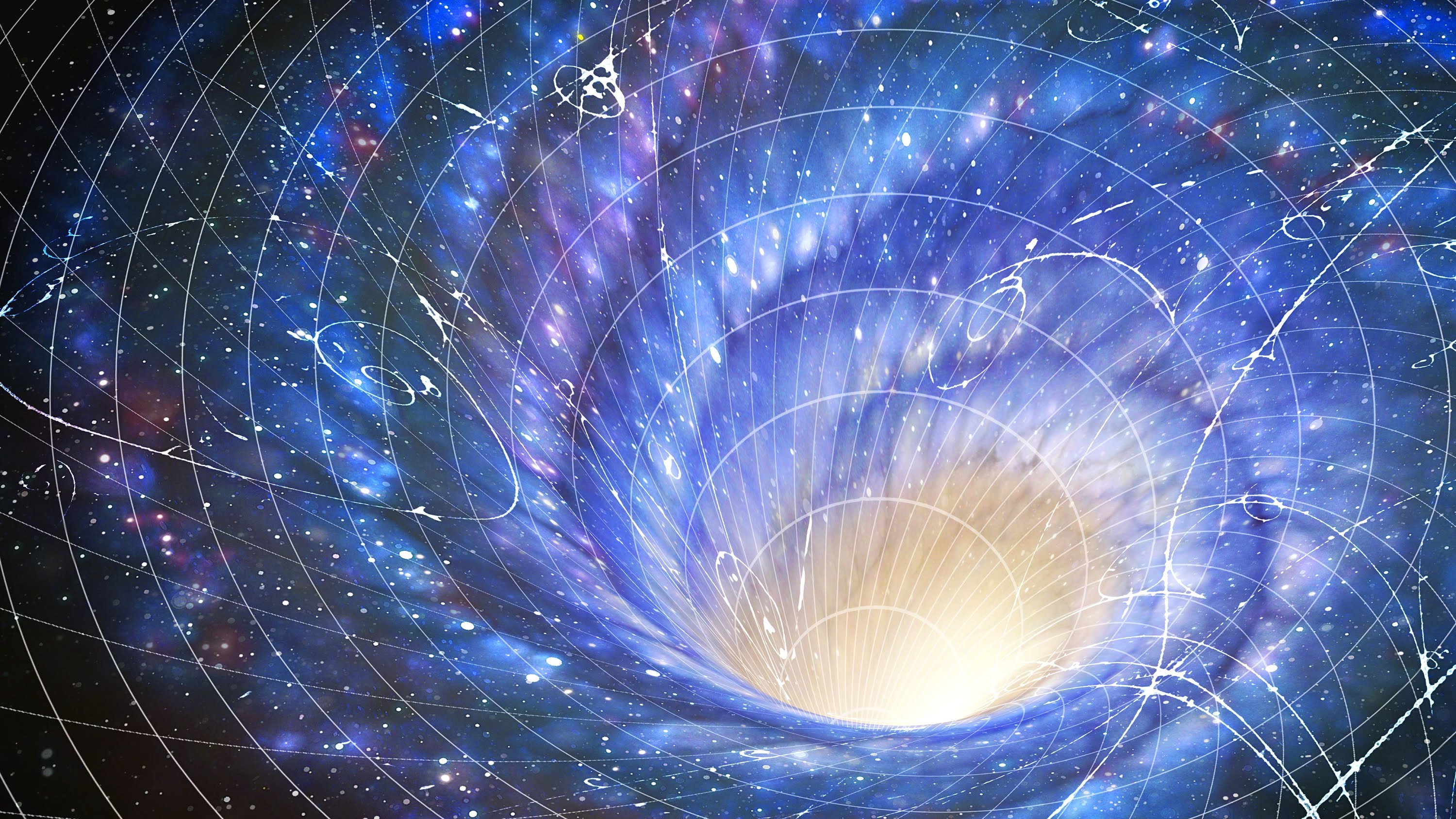By Nasser Rizvi
Physicists say time travel is possible and in fact has already happened. But before we examine how to travel through time, let’s discuss some background information about what time means in our universe. In fact, when you look up at the sky at night, you’re actually looking into the past.
Light is our communication device with the cosmos. Our eyes are built to be light receivers, and anything we see in outer space is due to some source emitting light (Galfard, 2016, p.64).
Light is the fastest traveling entity in the universe. That’s a law. Nothing travels faster than light. Although 186,282.397 miles per second (m/s) is pretty fast, it is not instantaneous. It still takes time to get from one place to another (Galfard, 2016, p.67).
Here’s an example. Suppose you write a letter from Athens to a friend that lives in Alaska. You put it in an envelope, stamp it, and send it off. When you send your letter, will your friend receive it at that moment? Or even that day? Doubtful. By the time your friend receives your letter, you could have fallen out of a Jeep during an African safari and died for all they know. Point being, it took time for your letter to get to your friend, and, during that time, things happen.
Now let’s take this concept and apply it to the cosmos. Consider a star far away from Earth. Here, the star is the letter-writer, light is the letter, and the Earth is the receiver. When a star shines, it is emitting light that sends an image of itself to us on Earth. But because light does not travel instantaneously (only 186,000 m/s), it takes time for the image to reach Earth, just like it takes time for your friend to receive your letter. The further the object, the longer it takes.
Now, we measure how far away an object is in space using light years. A light year is how far light travels in one year. So if light travels 186,000 miles per second, then in one year… well, that’s pretty far.
The furthest star that can be seen with the naked eye is V762 Cas, which is 16,308 light years away. You can try looking for it at night by yourself, but typically you need to know where to look since it is hard to see. That means when V762 (the letter sender) emits an image of itself using light (the letter), it takes light 16,308 years to reach our eyes (receivers). So, when you look at V762 at night, you are really looking it as it was 16,308 years in the past.

In 2014, scientists witnessed a star explode in a faraway galaxy using a telescope. As far as those scientists are concerned, that star died in January of 2014. But if you were right next to the star at the time of its death, you would have been 12,000,000 years older as of January 2014 (Galfard, 2016, p.68). In other words, that star was 12,000,000 light years away, so by the time we received the light that depicted the explosion, 12,000,000 years had passed, and the star was long gone.
Take the Sun. If the Sun stopped shining this instant, we wouldn’t realize it until eight minutes after the fact because it takes light eight minutes to travel the 93,000,000 miles from the Sun to Earth. We never see the Sun as it is, but rather as it was eight minutes ago. In fact, we do not even see the Sun where it is at any point; during the eight minutes it takes the Sun’s light to reach Earth, the Sun moves approximately 73,000 miles along its orbit. When we see the Sun we see it not only eight minutes in the past but also 73,000 miles off from its current location (Galfard, 2016, p.68).
So when we look into the sky or use instruments to look at objects in our universe, we are essentially receiving “letters” (light images) from everywhere, all sent at different times in the past from different locations in the universe. When we patch together all these letters what we get is a slice of the history of our universe as it is visible from Earth (Galfard, 2016, p.69).
Now that we have some knowledge on space and time, let’s examine how you can take advantage of light to travel through time.
To travel to the future, the first thing you need to do is find a way to travel at or near the speed of light in space. That’s 186,000 miles per second; good luck.
Remember that light is the fastest entity in the universe by law. So, if you move at near the speed of light, time will be moving slowly compared to you.
For example, let’s say you are a twenty-one-year old kid, and you leave home to travel to space for a year at the speed of light. You say goodbye to your mom and promise to return in a year. Off you go at 186,000 miles per second. You return to Earth at the age of twenty-two to discover that your mother died… 1,000,000 years ago.
“But I was only gone for a year,” you may think. Let’s examine what happened. At the speed of light, your time moves slowly relative to those on Earth. So when you return to Earth, you are only one year older while Earth aged by 1,000,000 years. This process is termed time dilation
How does this happen? The basic principle is that the universe is made of two components: space and time. Albert Einstein’s theory of relativity says as one component (such as motion through space) increases, the other (such as the temporal component) decreases. Thus, if you are moving at high speed and have greater motion through space, by law your time will slow down. So one year at the speed of light could be up to a million years on slower Earth, depending on how close to the speed of light you are traveling.
Time travel doesn’t happen only at high speeds, but rather at any speed. For example, astronaut Sergei Krikalev spent 803 days in space. His ship travelled at 7.33 km/s, and, due to this high speed, he returned to Earth 0.02 seconds in the future. So, traveling at the speed of light isn’t the only way to travel to the future, but the closer you get to the speed of light, the more significant the time difference will be.

Photo Source: universetoday.com
We know that time travel is possible. It’s been done already. The difficult part is finding a way to execute the idea. One of the major obstacles is obtaining the amount of energy required to travel at such a high speed. In addition, even if we somehow managed to concentrate all that energy, the force on the human body would likely prove fatal.
What’s more is that we have no way of traveling back in time. As speed is our mechanism for traveling to the future, there is no such mechanism for traveling to the past. Moving at a negative speed is not possible. So if you plan on traveling to the year 4050, be ready to say goodbye to 2017 for good.
If the cosmos intrigues you, a great book to read is “The Universe in Your Hand: A Journey Through Space, Time, And Beyond” by Christophe Galfard. Galfard doesn’t just explain the universe to you; he shows you the universe. No science background is needed; the book is tailored towards the layman. What we’ve discussed here is only a snippet of information contained in the book about our inexplicable universe. If you read Galfard’s novel, you will find concepts that can be difficult to fathom. While the book will make you feel highly insignificant here on tiny Earth, it will open your eyes to the wonders of the universe in which we live.

Galfard, Christophe. The Universe in Your Hand: A Journey through Space, Time, and beyond. New York: Flatiron, 2016. Print.


